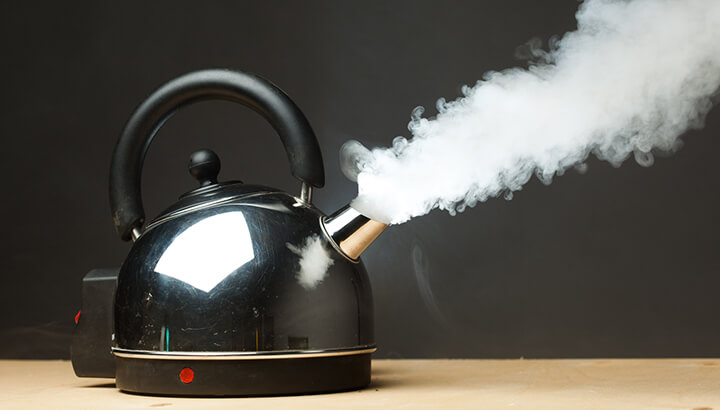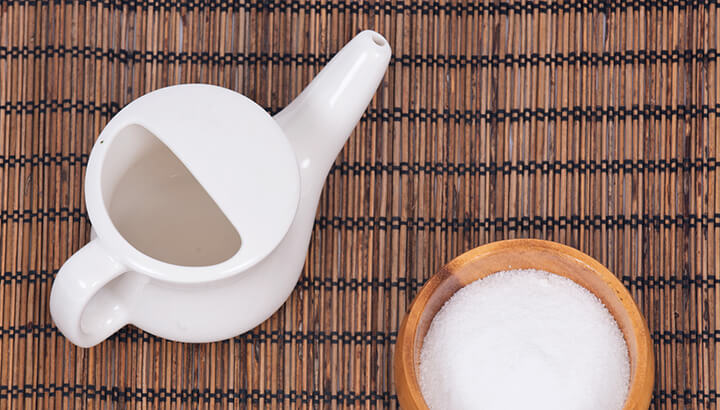Sure, they temporarily clear things up. But they also come with a whole host of side effects, including drowsiness, insomnia, dizziness, increased blood pressure, nosebleeds and even emotional imbalances. I tend to avoid any such medications. They’re not only causing unwanted side effects, but often prolonging the affliction. I’d rather suffer for a few days then string it out over two weeks due to some casual pill-popping! It’s funny how things come back around, especially in the alternative health industry. The neti pot is a classic example, one which has been around for thousands of years but has only recently received a dramatic resurgence in popularity. Neti pots are small hollow devices which look a little like an elongated teapot, or perhaps even a cute little genie lamp in the right light. They trace their origins back to ancient Indian Ayurvedic yoga traditions, where there was a deep understanding that one of the keys to good health was by gently cleansing the body.
How the neti pot works
The premise behind neti pots is a simple one, but it’s surprisingly effective. These curious contraptions work by flushing saline saline (salty) water through the sinuses. The action of moving water through the the nasal passages works to push mucus out. Meanwhile, the salt in the solution helps to cleanse the environment within the nasal passages. This prevents excess bacterial growth and infection, helping the sinuses to recover more rapidly.While the saline solution washes through the nasal passages, it improves the motion of the cilia. Cilia are tiny hairlike structures which line the inside of the nasal and sinus cavities, helping to move mucus either into the throat where it can be swallowed (mmmmm!) or into the nose where it can be ejected out (hopefully into a tissue). The cilia also transport allergens such as dust, pollen, viruses and bacteria out of the nasal passages.
Allergies or negative reactions to certain environmental triggers can cause inflammation in the sinuses, while heavy mucus accumulation can occur during colds or other health conditions. The result is the impairment of cilia function, which can then create a feedback effect of more blockages and increased pressure on your sinuses. The neti pot helps to alleviate this situation by washing a saline solution through the nasal passages and thereby freeing up the cilia so they can do their job. Like I said: a simple solution, but an effective one!
As people are increasingly coming to understand the dangers of modern Western medicine, the demand for neti pots is rising exponentially. But just because neti pots are a natural alternative, it doesn’t mean that they are without their own risks. This is particularly the case when people don’t fully understand how to operate them correctly, and the consequences can be dire. Here are three common neti pot mistakes which you should avoid at all costs. The reasons why should speak for themselves.
1. Using the wrong solution

Far from it being my intention to scare you off neti pots altogether, it seems prudent to list the most dangerous mistake first. Back in 2011, two people in separate incidents died at the hands of a neti pot. Their fatal mistake? Rinsing out their nasal passages with the wrong solution.
News reports told the story of how a 20-year-old male and 51-year-old female died after using tap water in their neti pots, rather than the recommended saline solution with sterilized water. Unfortunately for the two, the tap water they used was contaminated with the extremely lethal bacteria Naegleria fowleri, a brain-eating amoeba which has a 98 percent mortality rate.
It was a case of bad luck, as most tap water is typically safe for use. The microbes which killed the unlucky two aren’t even an issue if swallowed. It’s when they’re shoved up your nose with the aid of a neti pot that they can infect your brain and quickly put an end to things. Talk about unlucky.
Fortunately, the solution is simple: only fill your neti pot with distilled, sterile or saline water. The water should always come from a sealed, unopened bottle. Or, you can use water that’s run through a powerful home filter with a pore size of less than a micron. Tap water can still contain many impurities, so another approach is to boil it for three to five minutes and let it cool until lukewarm prior to putting it into your neti pot. This will ensure there are no brain-devouring microbes lurking in your nose flush.
2. Using your neti pot too frequently

You’ve heard the saying “there’s too much of a good thing,” right? Well, it’s a saying which hits all too close to home with frequent neti pot users. Occasionally using a neti pot can be a highly effective way to provide short-term relief and improve nasal mucous clearance. However, there’s plenty of evidence to suggest that excessive neti pot use can be harmful.
A study presented at the American College of Allergy, Asthma and Immunology’s annual meeting in 2009 showed that long-term neti pot users experienced an average of eight episodes of recurrent rhinosinusitis (RS) per year. This was compared to people who only occasionally used neti pots or stopped using them after the first application. Those people only experienced an average of three RS episodes per year. Researchers found that daily long-term use of neti pots and other nasal irrigation devices increased the frequency of acute infection by as much as 60 percent. Researchers theorized that “long-term use of NSI may deplete the nose of its immune blanket of mucus, resulting in recurrent RS.”
Once again, the solution is simple: take a neti pot vacation! If you find that your sinus issue is recurrent and you need your neti pot for relief, consult a specialist. Look to other avenues for a solution.
3. Not giving your neti pot a good clean
The final major neti pot mistake comes down to good old-fashioned housekeeping. Because neti pots contain sterile solution, many people think they don’t need to wash them out after each and every use. This couldn’t be further from the truth. Residual moisture left over in your neti pot can encourage the growth of bacteria in and around the edges of the pot. Some of these opportunistic bacterial colonies may contain those brain-eating microbes we mentioned earlier, and we all know where that story goes.Once again, it’s an easy mistake to circumvent. If your neti pot is dishwasher safe, simply throw it in for a rinse after every use. Fully dry the neti pot before you put it away. Otherwise, rinse the pot out yourself with some hot water and a little plant-based dish soap. Make sure to dry it thoroughly afterwards. Doing so should ensure your beloved neti pot doesn’t become a death trap!
— Liivi Hess
No comments:
Post a Comment